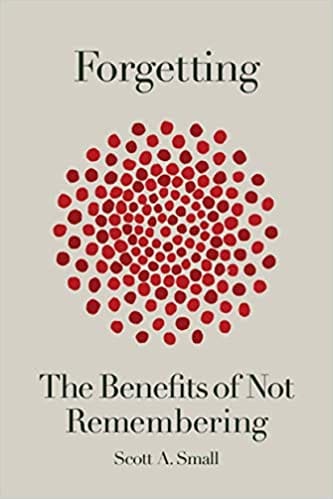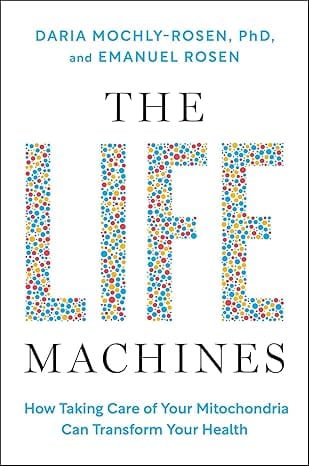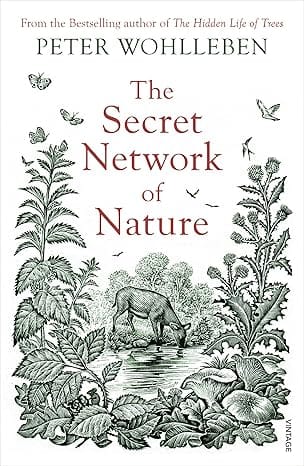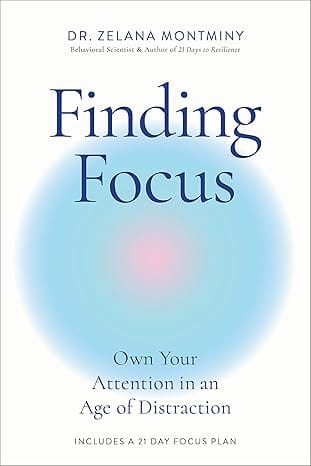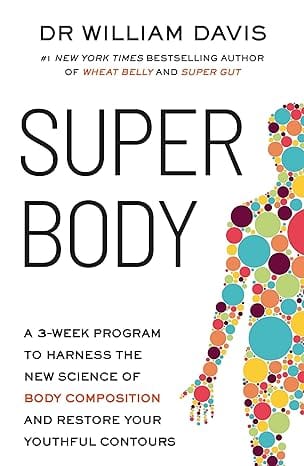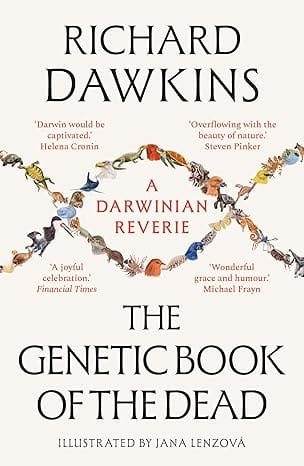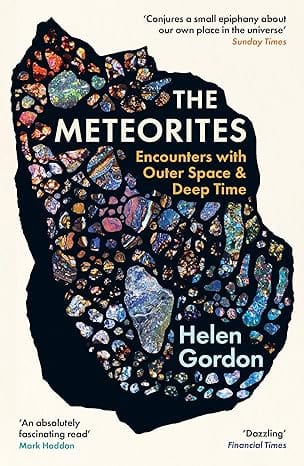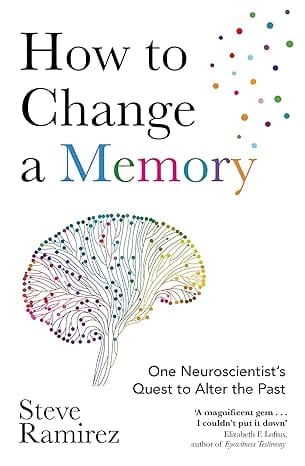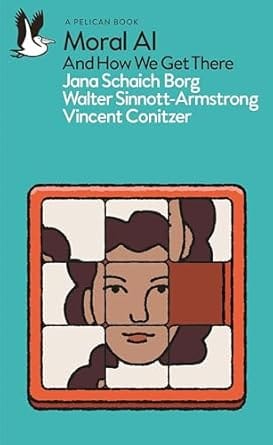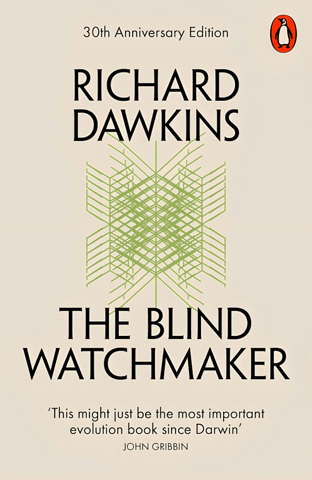-
Non-ficton
- Non-ficton
-
Contemporary Fiction
- Contemporary Fiction
-
Children
- Children
-
Comics & Graphic Novels
- Comics & Graphic Novels
-
Non-Fiction
- Non-Fiction
-
Fiction
- Fiction
“Fascinating and useful . . . The distinguished memory researcher Scott A. Small explains why forgetfulness is not only normal but also beneficial.”—Walter Isaacson, bestselling author of The Code Breaker and Leonardo da Vinci
Who wouldn’t want a better memory? Dr. Scott Small has dedicated his career to understanding why memory forsakes us. As director of the Alzheimer’s Disease Research Center at Columbia University, he focuses largely on patients who experience pathological forgetting, and it is in contrast to their suffering that normal forgetting, which we experience every day, appears in sharp relief.
Until recently, most everyone—memory scientists included—believed that forgetting served no purpose. But new research in psychology, neurobiology, medicine, and computer science tells a different story. Forgetting is not a failure of our minds. It’s not even a benign glitch. It is, in fact, good for us—and, alongside memory, it is a required function for our minds to work best.
Forgetting benefits our cognitive and creative abilities, emotional well-being, and even our personal and societal health. As frustrating as a typical lapse can be, it’s precisely what opens up our minds to making better decisions, experiencing joy and relationships, and flourishing artistically.
From studies of bonobos in the wild to visits with the iconic painter Jasper Johns and the renowned decision-making expert Daniel Kahneman, Small looks across disciplines to put new scientific findings into illuminating context while also revealing groundbreaking developments about Alzheimer’s disease. The next time you forget where you left your keys, remember that a little forgetting does a lot of good.
Review
“Eye-opening . . . accessible with an easygoing prose.”—Publishers Weekly
“In his clear-worded and compassionate book, Scott Small translates the current science of memory for the general reader and explains why the onset of forgetting may be benign or even helpful rather than the beginning of a tragedy. Forgetting is a welcome addition to the literature on human memory at a time of both solitude and hope.”—Antonio Damasio, author of The Strange Order of Things
“Scott Small has written a book that will calm the fears of anyone who has mislaid a pair of glasses or couldn’t remember the name of an acquaintance and worried they were suffering from incipient memory loss. Forgetting is the work of an accomplished neuroscientist who follows in the tradition of Oliver Sacks, illuminating the mysteries of the brain with personal stories and lively, accessible writing as he makes the case that not remembering is a crucial biological function rather than the inevitable prelude to dementia.”—Sue Halpern, author of A Dog Walks into a Nursing Home
“This book is both fascinating and useful. The distinguished memory researcher Scott Small explains why forgetfulness is not just normal but beneficial. By allowing us to see the forest as well as the trees, forgetting promotes creativity and pattern recognition. This readable book will help you understand how the right mix of forgetting and memory allows you—and our whole society—to be emotionally healthy.”—Walter Isaacson, bestselling author of Leonardo Da Vinci and Steve Jobs
About the Author
Excerpt. © Reprinted by permission. All rights reserved.
To Remember, to Forget
“My mind was like a steel trap!” declared Karl, my first patient of the day at Columbia University’s Memory Disorders Center. Among the many metaphors for memory, a steel trap is one of my least favorites—partly on aesthetic grounds (the violent visual of a trapped paw is repugnant), but mainly for its misleading scientific implications. Even for those in the superior range, memory is never steely; it is flexible, form-shifting, and fragmented. The trap metaphor is also mechanically incorrect by implying that memories are formed instantly, with a decisive snap.
A Manhattan criminal defense lawyer, Karl appeared dressed for court. Renowned for its expertise in Alzheimer’s disease and related disorders, our center provides care to a diversity of patients from around the world. Still, Karl stood out, and not just because of the tailored fit of his three-piece suit. When I arrived punctually to the office from my research laboratory a block away, Karl was pacing and raring to go, revealing a hyperkinetic eagerness atypical of our patients. It turned out that he had studied English literature as an undergraduate at Yale, and once he’d dispensed some initial glib proclamations about his superior cognitive abilities and courtroom prowess, he relaxed and began articulating his symptoms and his fears about their causes and their consequences on his active legal career.
Listening carefully to a patient’s symptoms and clinical history is the first order of a neurologist’s business. These testimonials contain rich information we need to achieve our central goal, “localizing the lesion.” Even more than other medical specialists, neurologists are typically obsessed with asking “where?” before asking “what?” The cause of arm weakness, for example, can localize to muscles or nerves, or different parts of the spinal cord, or the brain, and each part of this nervous system map is targeted by different diseases. Most of us admit to taking joy in solving this anatomical puzzle. It requires knowledge of the nervous system’s circuitry, an understanding of how different nodes of the circuit function, and, accordingly, how to probe the circuit in isolating the source of the problem. The joys of our profession aside, localizing the lesion—answering the question of where—is critical for getting the diagnosis right.
Isolating the anatomical source of someone’s malfunctioning memory is harder than isolating the source of a malfunctioning arm, but the same principle applies. Memory specialists begin localizing the lesion that is causing pathological forgetting the second a patient walks through the door. Even during the informal introductory phase, we try to map the function of a patient’s cognitive brain regions in order to get a sense of how their memory network functioned in their “premorbid state”—that is, before the onset of cognitive symptoms. (Beware, an occupational hazard: we reflexively perform these functional “biopsies” even when chitchatting in social settings. Just listening to how someone tells a story—that is, how embroidered the details, how rich the vocabulary and syntax—we can’t help but start color-coding the storyteller’s cognitive brain regions according to level of function.) These admittedly blurry cognitive brain maps are a helpful starting point from which we can chart the anatomical source of a patient’s chief cognitive complaints. By the end of the first visit, we try to formulate an opinion on the “where” of memory loss. Subsequent clinical tests—which may include blood work, neuroimaging studies like MRI, and a neuropsychological evaluation—ultimately confirm or help us adjust that opinion.
Karl had always excelled in school, and even among his academically competitive peers his memory was exceptional, as evidenced by his ability to memorize baseball stats as a boy growing up on Long Island, poems as an undergraduate, and legal torts as a student at NYU’s law school. His outstanding memory was professionally useful and well known throughout his law firm. After meeting someone once—a summer intern, a legal assistant, or, of course, a client—he would never forget that person’s face or name. And this turned out to be his chief clinical complaint: a slippage in recalling clients’ names. Recently, a few months after meeting an important new client, he’d run into her on a bustling Manhattan street and, shockingly, fumbled for her name. Simply an embarrassing nuisance for most of us, stumbling over a name felt to Karl like a serious drag on his career.
Just hearing Karl’s history, and listening carefully to his chief clinical complaint, I began formulating a pretty good idea about which parts of his brain might be the source of his pathological forgetting. In fact, I had a strong hunch that it was likely localized to one of two areas, a hunch that I would then try to confirm with a neurological exam and a rudimentary memory test that I perform in my office, then with additional tests that would be administered at the visit’s end. But in order to explain my hunch—and before we can begin to explain how forgetting works—I think an overview of memory will be helpful as I take you through my clinical thinking and evaluation, and on to Karl’s ultimate diagnosis.
Among the many metaphors for memory, a personal computer is a good one. In fact, better than a metaphor, how a personal computer works turns out to be an excellent analogy for how our brains store, save, and retrieve memories. That’s no coincidence, since both computer and brain engineers have to solve the same three problems in learning how best to handle vast amounts of information: where to store memories, how to save memories in the dedicated storage site, and how to open and retrieve memories on demand. For this play of memory, our brains have three main anatomical actors. A collection of regions toward the back of the brain, which for simplicity I will call the posterior area, is where many of our most cherished memories are stored. A structure buried deep in the brain’s temporal cortex, the hippocampus, allows the brain to properly save these memories. And an area in the prefrontal cortex, located right behind our foreheads, is the general area that helps us open and retrieve memories. Whenever you save a document onto your computer hard drive or open a previously stored file, you are playing with your computer’s memory just as your brain does with your own.
The same way the basic units of information storage in your computer hard drive are “bits” (the binary digits 0 and 1), the basic unit of memory storage within our brains is a cell, a neuron. But not the whole neuron; memory bits are located at the neuron’s tips. Just looking at a neuron, you can see that most of it is made up of branch-like extensions called dendrites. At the very tip of the outer dendrites are tiny protrusions—hundreds of them—which are called dendritic spines. Tiny but mighty, and like budding leaves on the branches of a highly arborized tree, spines are where neurons connect and communicate with one another at a meeting point called a synapse. The larger the spines, the stronger the synaptic connection, and thus the louder and clearer the communication. As different as the neuron might appear from other cells in our bodies—say, ovoid liver cells or cuboid heart cells—it is the connecting synapse, the cleft between communicating neurons, that truly distinguishes it. If the function of an organ can be simply defined by the one distinguishing property of what its cells do—liver cells detoxify, heart cells pump—then “brain cells synaptically connect” is a pretty good definition of brain function.
Because the size of dendritic spines constantly morphs with experience, synaptic connections are said to be plastic rather than stapled with steel. When a neuron and its neighboring neuron are simultaneously stimulated at a high enough level, their spines may grow. When a sufficient number of spines proliferate, the connection between the neurons is strengthened, which is what happens when a new memory is formed. This binding of neurons explains the scientific rhyme “Neurons that fire together wire together.” When the neuron is stimulated out of sync with its neighbor, the spines might wilt back down—which is what happens during forgetting. The dendritic spines, at the outer tips of neurons, are thus the information bits of our memories.
- Home
- Science Technology And Medicine
- Forgetting The Benefits Of Not Remembering
Forgetting The Benefits Of Not Remembering
SIZE GUIDE
- ISBN :9780593136195
- Author: Scott A Small
- Publisher: Crown
- Pages: 240
- Format: Hardback
Book Description
“Fascinating and useful . . . The distinguished memory researcher Scott A. Small explains why forgetfulness is not only normal but also beneficial.”—Walter Isaacson, bestselling author of The Code Breaker and Leonardo da Vinci
Who wouldn’t want a better memory? Dr. Scott Small has dedicated his career to understanding why memory forsakes us. As director of the Alzheimer’s Disease Research Center at Columbia University, he focuses largely on patients who experience pathological forgetting, and it is in contrast to their suffering that normal forgetting, which we experience every day, appears in sharp relief.
Until recently, most everyone—memory scientists included—believed that forgetting served no purpose. But new research in psychology, neurobiology, medicine, and computer science tells a different story. Forgetting is not a failure of our minds. It’s not even a benign glitch. It is, in fact, good for us—and, alongside memory, it is a required function for our minds to work best.
Forgetting benefits our cognitive and creative abilities, emotional well-being, and even our personal and societal health. As frustrating as a typical lapse can be, it’s precisely what opens up our minds to making better decisions, experiencing joy and relationships, and flourishing artistically.
From studies of bonobos in the wild to visits with the iconic painter Jasper Johns and the renowned decision-making expert Daniel Kahneman, Small looks across disciplines to put new scientific findings into illuminating context while also revealing groundbreaking developments about Alzheimer’s disease. The next time you forget where you left your keys, remember that a little forgetting does a lot of good.
Review
“Eye-opening . . . accessible with an easygoing prose.”—Publishers Weekly
“In his clear-worded and compassionate book, Scott Small translates the current science of memory for the general reader and explains why the onset of forgetting may be benign or even helpful rather than the beginning of a tragedy. Forgetting is a welcome addition to the literature on human memory at a time of both solitude and hope.”—Antonio Damasio, author of The Strange Order of Things
“Scott Small has written a book that will calm the fears of anyone who has mislaid a pair of glasses or couldn’t remember the name of an acquaintance and worried they were suffering from incipient memory loss. Forgetting is the work of an accomplished neuroscientist who follows in the tradition of Oliver Sacks, illuminating the mysteries of the brain with personal stories and lively, accessible writing as he makes the case that not remembering is a crucial biological function rather than the inevitable prelude to dementia.”—Sue Halpern, author of A Dog Walks into a Nursing Home
“This book is both fascinating and useful. The distinguished memory researcher Scott Small explains why forgetfulness is not just normal but beneficial. By allowing us to see the forest as well as the trees, forgetting promotes creativity and pattern recognition. This readable book will help you understand how the right mix of forgetting and memory allows you—and our whole society—to be emotionally healthy.”—Walter Isaacson, bestselling author of Leonardo Da Vinci and Steve Jobs
About the Author
Excerpt. © Reprinted by permission. All rights reserved.
To Remember, to Forget
“My mind was like a steel trap!” declared Karl, my first patient of the day at Columbia University’s Memory Disorders Center. Among the many metaphors for memory, a steel trap is one of my least favorites—partly on aesthetic grounds (the violent visual of a trapped paw is repugnant), but mainly for its misleading scientific implications. Even for those in the superior range, memory is never steely; it is flexible, form-shifting, and fragmented. The trap metaphor is also mechanically incorrect by implying that memories are formed instantly, with a decisive snap.
A Manhattan criminal defense lawyer, Karl appeared dressed for court. Renowned for its expertise in Alzheimer’s disease and related disorders, our center provides care to a diversity of patients from around the world. Still, Karl stood out, and not just because of the tailored fit of his three-piece suit. When I arrived punctually to the office from my research laboratory a block away, Karl was pacing and raring to go, revealing a hyperkinetic eagerness atypical of our patients. It turned out that he had studied English literature as an undergraduate at Yale, and once he’d dispensed some initial glib proclamations about his superior cognitive abilities and courtroom prowess, he relaxed and began articulating his symptoms and his fears about their causes and their consequences on his active legal career.
Listening carefully to a patient’s symptoms and clinical history is the first order of a neurologist’s business. These testimonials contain rich information we need to achieve our central goal, “localizing the lesion.” Even more than other medical specialists, neurologists are typically obsessed with asking “where?” before asking “what?” The cause of arm weakness, for example, can localize to muscles or nerves, or different parts of the spinal cord, or the brain, and each part of this nervous system map is targeted by different diseases. Most of us admit to taking joy in solving this anatomical puzzle. It requires knowledge of the nervous system’s circuitry, an understanding of how different nodes of the circuit function, and, accordingly, how to probe the circuit in isolating the source of the problem. The joys of our profession aside, localizing the lesion—answering the question of where—is critical for getting the diagnosis right.
Isolating the anatomical source of someone’s malfunctioning memory is harder than isolating the source of a malfunctioning arm, but the same principle applies. Memory specialists begin localizing the lesion that is causing pathological forgetting the second a patient walks through the door. Even during the informal introductory phase, we try to map the function of a patient’s cognitive brain regions in order to get a sense of how their memory network functioned in their “premorbid state”—that is, before the onset of cognitive symptoms. (Beware, an occupational hazard: we reflexively perform these functional “biopsies” even when chitchatting in social settings. Just listening to how someone tells a story—that is, how embroidered the details, how rich the vocabulary and syntax—we can’t help but start color-coding the storyteller’s cognitive brain regions according to level of function.) These admittedly blurry cognitive brain maps are a helpful starting point from which we can chart the anatomical source of a patient’s chief cognitive complaints. By the end of the first visit, we try to formulate an opinion on the “where” of memory loss. Subsequent clinical tests—which may include blood work, neuroimaging studies like MRI, and a neuropsychological evaluation—ultimately confirm or help us adjust that opinion.
Karl had always excelled in school, and even among his academically competitive peers his memory was exceptional, as evidenced by his ability to memorize baseball stats as a boy growing up on Long Island, poems as an undergraduate, and legal torts as a student at NYU’s law school. His outstanding memory was professionally useful and well known throughout his law firm. After meeting someone once—a summer intern, a legal assistant, or, of course, a client—he would never forget that person’s face or name. And this turned out to be his chief clinical complaint: a slippage in recalling clients’ names. Recently, a few months after meeting an important new client, he’d run into her on a bustling Manhattan street and, shockingly, fumbled for her name. Simply an embarrassing nuisance for most of us, stumbling over a name felt to Karl like a serious drag on his career.
Just hearing Karl’s history, and listening carefully to his chief clinical complaint, I began formulating a pretty good idea about which parts of his brain might be the source of his pathological forgetting. In fact, I had a strong hunch that it was likely localized to one of two areas, a hunch that I would then try to confirm with a neurological exam and a rudimentary memory test that I perform in my office, then with additional tests that would be administered at the visit’s end. But in order to explain my hunch—and before we can begin to explain how forgetting works—I think an overview of memory will be helpful as I take you through my clinical thinking and evaluation, and on to Karl’s ultimate diagnosis.
Among the many metaphors for memory, a personal computer is a good one. In fact, better than a metaphor, how a personal computer works turns out to be an excellent analogy for how our brains store, save, and retrieve memories. That’s no coincidence, since both computer and brain engineers have to solve the same three problems in learning how best to handle vast amounts of information: where to store memories, how to save memories in the dedicated storage site, and how to open and retrieve memories on demand. For this play of memory, our brains have three main anatomical actors. A collection of regions toward the back of the brain, which for simplicity I will call the posterior area, is where many of our most cherished memories are stored. A structure buried deep in the brain’s temporal cortex, the hippocampus, allows the brain to properly save these memories. And an area in the prefrontal cortex, located right behind our foreheads, is the general area that helps us open and retrieve memories. Whenever you save a document onto your computer hard drive or open a previously stored file, you are playing with your computer’s memory just as your brain does with your own.
The same way the basic units of information storage in your computer hard drive are “bits” (the binary digits 0 and 1), the basic unit of memory storage within our brains is a cell, a neuron. But not the whole neuron; memory bits are located at the neuron’s tips. Just looking at a neuron, you can see that most of it is made up of branch-like extensions called dendrites. At the very tip of the outer dendrites are tiny protrusions—hundreds of them—which are called dendritic spines. Tiny but mighty, and like budding leaves on the branches of a highly arborized tree, spines are where neurons connect and communicate with one another at a meeting point called a synapse. The larger the spines, the stronger the synaptic connection, and thus the louder and clearer the communication. As different as the neuron might appear from other cells in our bodies—say, ovoid liver cells or cuboid heart cells—it is the connecting synapse, the cleft between communicating neurons, that truly distinguishes it. If the function of an organ can be simply defined by the one distinguishing property of what its cells do—liver cells detoxify, heart cells pump—then “brain cells synaptically connect” is a pretty good definition of brain function.
Because the size of dendritic spines constantly morphs with experience, synaptic connections are said to be plastic rather than stapled with steel. When a neuron and its neighboring neuron are simultaneously stimulated at a high enough level, their spines may grow. When a sufficient number of spines proliferate, the connection between the neurons is strengthened, which is what happens when a new memory is formed. This binding of neurons explains the scientific rhyme “Neurons that fire together wire together.” When the neuron is stimulated out of sync with its neighbor, the spines might wilt back down—which is what happens during forgetting. The dendritic spines, at the outer tips of neurons, are thus the information bits of our memories.
User reviews
NEWSLETTER
Subscribe to get Email Updates!
Thanks for subscribing.
Your response has been recorded.

India's Iconic & Independent Book Store offering a vast selection of books across a variety of genres Since 1978.
"We Believe In The Power of Books" Our mission is to make books accessible to everyone, and to cultivate a culture of reading and learning. We strive to provide a wide range of books, from classic literature, sci-fi and fantasy, to graphic novels, biographies and self-help books, so that everyone can find something to read.
Whether you’re looking for your next great read, a gift for someone special, or just browsing, Midland is here to make your book-buying experience easy and enjoyable.
We are shipping pan India and across the world.
For Bulk Order / Corporate Gifting
 +91 9818282497 |
+91 9818282497 |  [email protected]
[email protected]
Click To Know More
INFORMATION
POLICIES
ACCOUNT
QUICK LINKS
ADDRESS
Shop No.20, Aurobindo Palace Market, Near Church, New Delhi

